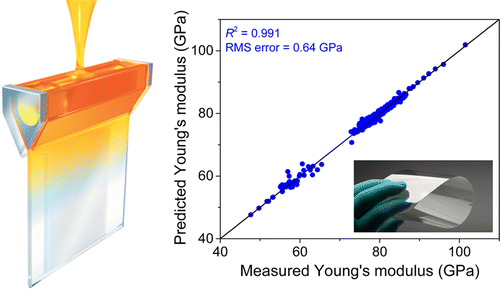Decoding the glass 'genome' contributes to new functional materials

From protecting our most valuable works of art to enabling smartphone displays, glass has become one of our most important materials. Making it even more versatile is the next challenge. Developing new glass compositions is largely a time-consuming, trial-and-error exercise. But now scientists have developed a way to decode the glass "genome" and design different compositions of the material without making and melting every possibility. Their report appears in ACS' journal Chemistry of Materials.
Despite the fact that humans have been making glass since antiquity, the material is still unpredictable. Scientists don't yet fully understand how the structure of glass affects its properties such as density, crack resistance and melting temperatures. This knowledge gap hinders progress in developing new products, such as lighter windows for more fuel-efficient cars. A major complicating factor is that just about any element can be incorporated into glass, which means a near-endless list of possible compositions, each with a different set of properties. Glass types have been made by trial-and-error, but this process takes a lot of time. Morten M. Smedskjaer of Aalborg University and colleagues at Corning Incorporated wanted to come up with a faster way to develop new glass compositions for large-scale use.
The researchers combined a range of computer models, from the empirical to those grounded in physics, to explore what they call the glass genome—the possible combinations of materials and their resulting properties. Using these models, glass makers will be able to predict how various glass compositions will behave in the real world, and optimize them for industrial production much faster than before.
More information: John C. Mauro et al. Accelerating the Design of Functional Glasses through Modeling, Chemistry of Materials (2016). DOI: 10.1021/acs.chemmater.6b01054
Abstract
Functional glasses play a critical role in current and developing technologies. These materials have traditionally been designed empirically through trial-and-error experimentation. However, here we report recent advancements in the design of new glass compositions starting at the atomic level, which have become possible through an unprecedented level of understanding of glass physics and chemistry. For example, new damage-resistant glasses have been developed using models that predict both manufacturing-related attributes (e.g., viscosity, liquidus temperature, and refractory compatibility), as well as the relevant end-use properties of the glass (e.g., elastic moduli, compressive stress, and damage resistance). We demonstrate how this approach can be used to accelerate the design of new industrial glasses for use in various applications. Through a combination of models at different scales, from atomistic through empirical modeling, it is now possible to decode the "glassy genome" and efficiently design optimized glass compositions for production at an industrial scale.
Journal information: Chemistry of Materials
Provided by American Chemical Society




















